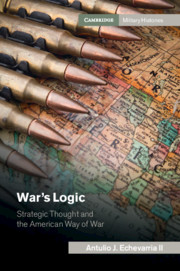Refine search
Actions for selected content:
7 results
18 - Warfare in South-East Asia, 1448–1851
-
-
- Book:
- The Cambridge History of War
- Published online:
- 18 July 2025
- Print publication:
- 14 August 2025, pp 449-465
-
- Chapter
- Export citation
23 - The wars of the French Republic and the Napoleonic Wars, 1789–1815
-
-
- Book:
- The Cambridge History of War
- Published online:
- 18 July 2025
- Print publication:
- 14 August 2025, pp 552-572
-
- Chapter
- Export citation
9 - European expansion in the Indian Ocean and Pacific, 1450–1850
-
-
- Book:
- The Cambridge History of War
- Published online:
- 18 July 2025
- Print publication:
- 14 August 2025, pp 231-254
-
- Chapter
- Export citation
3 - Small Wars and Domain Theory
-
- Book:
- The New Art of War
- Published online:
- 12 August 2021
- Print publication:
- 02 September 2021, pp 149-192
-
- Chapter
- Export citation
1 - Alfred Thayer Mahan and Sea Power
- from Part I - First Principles and Modern War
-
- Book:
- War's Logic
- Published online:
- 05 February 2021
- Print publication:
- 18 February 2021, pp 13-31
-
- Chapter
- Export citation

War's Logic
- Strategic Thought and the American Way of War
-
- Published online:
- 05 February 2021
- Print publication:
- 18 February 2021
19 - North America
- from Part III - World War
-
-
- Book:
- The Cambridge History of the First World War
- Published online:
- 05 December 2013
- Print publication:
- 09 January 2014, pp 511-532
-
- Chapter
- Export citation
